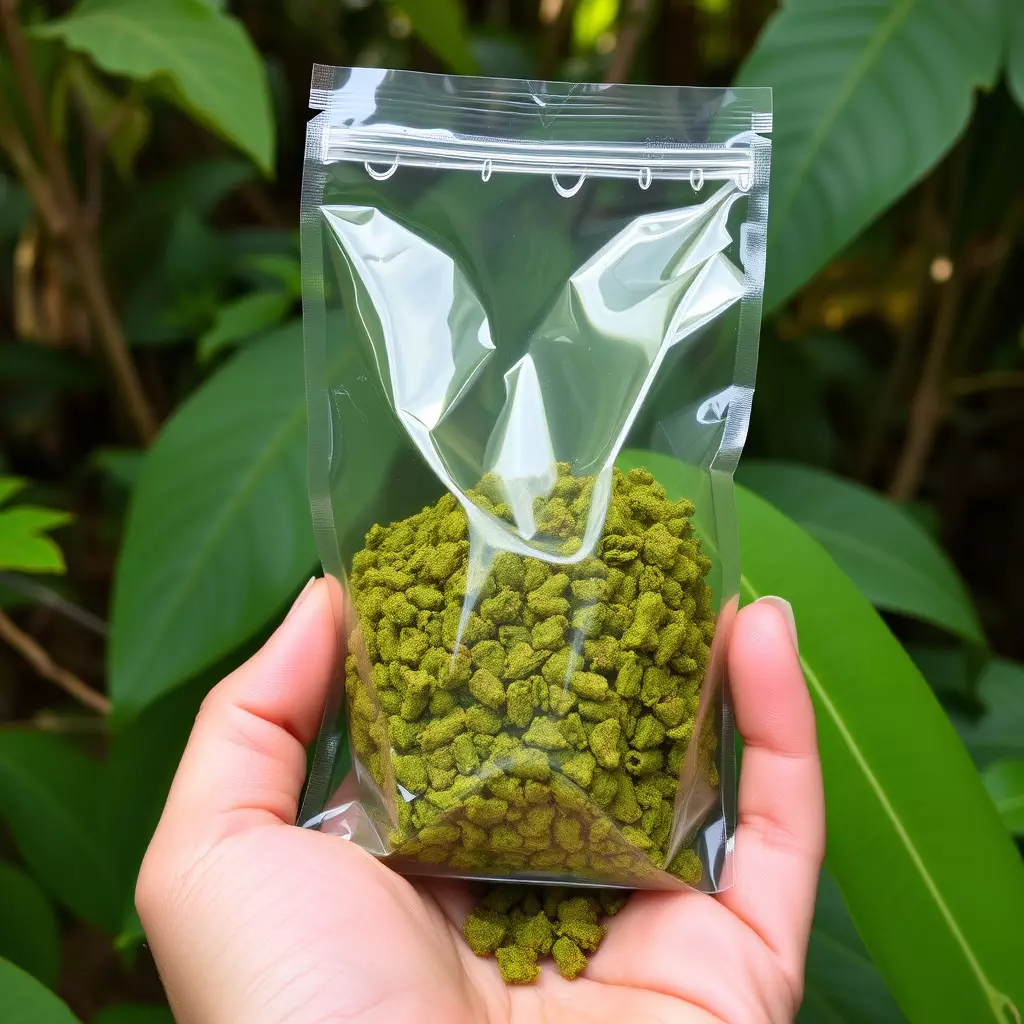Kratom, derived from the Mitragyna speciosa tree, has garnered research interest for its potential impact on emotional regulation. Its primary alkaloids, mitragynine and 7-hydroxymitragynine, engage with brain opioid receptors, potentially influencing mood, stress response, and emotional control by affecting key neurotransmitter systems involving serotonin and norepinephrine. Preclinical research suggests kratom may modulate these systems to facilitate a more balanced emotional state and help manage intense emotional reactions. However, users should exercise caution due to the variability in individual responses, and the inconsistent legal status of kratom across different regions must be considered. It's crucial for individuals to approach kratom with care, starting with a low dose to understand personal sensitivity, and to consult healthcare professionals, especially if they have pre-existing health conditions or are taking other medications. Ongoing scientific investigation continues to explore the mechanisms behind kratom's influence on emotional well-being, with the aim of clarifying its role in emotion regulation and its broader implications for mental health.
Exploring the nuanced effects of kratom on emotional well-being, this article sheds light on its potential role in regulating emotions and curbing emotional reactivity. Delving into the scientific evidence, we uncover how kratom interacts with the brain to modulate responses, offering insights into its impact on stress and emotional balance. Subsequently, practical guidance is provided for those considering kratom as a tool for enhancing their emotional equilibrium, emphasizing responsible use and individual differences in response. This exploration of ’emotional regulation with kratom’ aims to inform readers about the complex relationship between this botanical substance and emotional health.
- Unraveling the Role of Kratom in Emotional Regulation and Reactivity Management
- The Science Behind Kratom's Impact on Emotional Responses
- Practical Considerations for Using Kratom to Enhance Emotional Equilibrium
Unraveling the Role of Kratom in Emotional Regulation and Reactivity Management

Kratom, a plant from Southeast Asia, has been the subject of increasing interest for its potential effects on emotional regulation and reactivity management. Its leaves contain alkaloids such as mitragynine and 7-hydroxymitragynine, which are thought to influence the brain’s opioid receptors, leading to a variety of physiological and psychological responses. Preclinical studies suggest that kratom may modulate mood and alleviate symptoms of depression and anxiety. Users report that it helps in managing emotional responses by providing a sense of well-being and calmness. This can be particularly beneficial for individuals experiencing heightened emotional reactivity, as kratom appears to buffer stress responses and promote a more measured emotional state.
The impact of kratom on emotional regulation is multifaceted. Its psychoactive properties may enhance an individual’s ability to perceive emotional stimuli without an excessive or overwhelming response. This can be attributed to its effects on neurotransmitter systems, particularly those involving serotonin and norepinephrine, which are pivotal in mood regulation. However, it is crucial for individuals to approach kratom with caution, as its effects can vary widely among users, and its legal status and potential for dependence necessitate careful consideration and responsible use. The scientific community continues to investigate the mechanisms by which kratom influences emotional states, and ongoing research aims to elucidate its role in the complex domain of emotion regulation and reactivity management.
The Science Behind Kratom's Impact on Emotional Responses

Studies have begun to elucidate the mechanisms by which kratom, a plant-derived supplement from the Mitragyna speciosa tree, may influence emotional regulation. Kratom contains alkaloids such as mitragynine and 7-hydroxymitragynine, which are thought to interact with opioid receptors in the brain. This interaction can modulate neurotransmitter systems, including those involved in mood regulation, stress response, and emotional reactivity. Preclinical research suggests that kratom may enhance the release of endogenous opioids and neurotransmitters like serotonin and norepinephrine, which play a role in regulating mood and emotional responses. As a result, individuals who consume kratom might experience a diminished emotional reaction to stressors or negative stimuli due to the balanced modulation of these neurotransmitter systems.
Furthermore, anecdotal evidence and some clinical research support the idea that kratom can help individuals manage their emotional responses, potentially aiding in the reduction of symptoms associated with various mood disorders. However, it is crucial for users to approach kratom with caution as its effects can be dose-dependent and variable between individuals. The legal status of kratom varies by region, and its use should be informed by both scientific research and professional guidance due to potential side effects and the need for further study to fully understand its impact on emotional regulation and overall well-being.
Practical Considerations for Using Kratom to Enhance Emotional Equilibrium

Kratom, a tropical tree native to Southeast Asia, has garnered attention for its potential role in emotional regulation due to its interaction with the brain’s opioid receptors. Users often report that kratom can help modulate their emotional responses, potentially reducing the intensity of emotional reactivity. When considering the use of kratom for emotional equilibrium, it is crucial to approach it with caution and a well-informed perspective. The alkaloids present in kratom leaves, primarily mitragynine and 7-hydroxymitragynine, are believed to contribute to its effects on mood and stress responses.
For those exploring kratom as a tool for emotional regulation, it is important to start with a low dose to gauge individual sensitivity. It is also advisable to monitor the frequency and amount used to maintain balance rather than dependence. Users should be aware of the legal status of kratom in their jurisdiction, as it varies across countries and states. Additionally, potential side effects such as nausea, constipation, and withdrawal symptoms when discontinued should be carefully weighed against the benefits. It is recommended to use kratom under the guidance of a healthcare professional, especially for individuals with pre-existing health conditions or those taking other medications. By adhering to responsible usage practices and seeking professional advice, kratom can be a consideration in the quest for enhanced emotional equilibrium.
In conclusion, the potential of kratom in modulating emotional responses and promoting regulatory mechanisms within the brain presents a compelling area of study for those interested in the intersection of botanical substances and psychological well-being. The scientific evidence, as discussed, indicates that kratom can play a role in both emotional regulation with kratom and reactivity management, offering a unique perspective on natural approaches to mental health. However, it is imperative to approach its use with caution, considering the varying strains and their potencies, as well as individual differences in response. A nuanced understanding of the science behind kratom’s impact, coupled with practical considerations for its application, can pave the way for informed decision-making and responsible exploration of this plant’s effects on emotional balance. As research continues to evolve, it is anticipated that further insights will emerge, potentially guiding therapeutic applications and enhancing our overall understanding of the brain’s emotional regulation systems.






